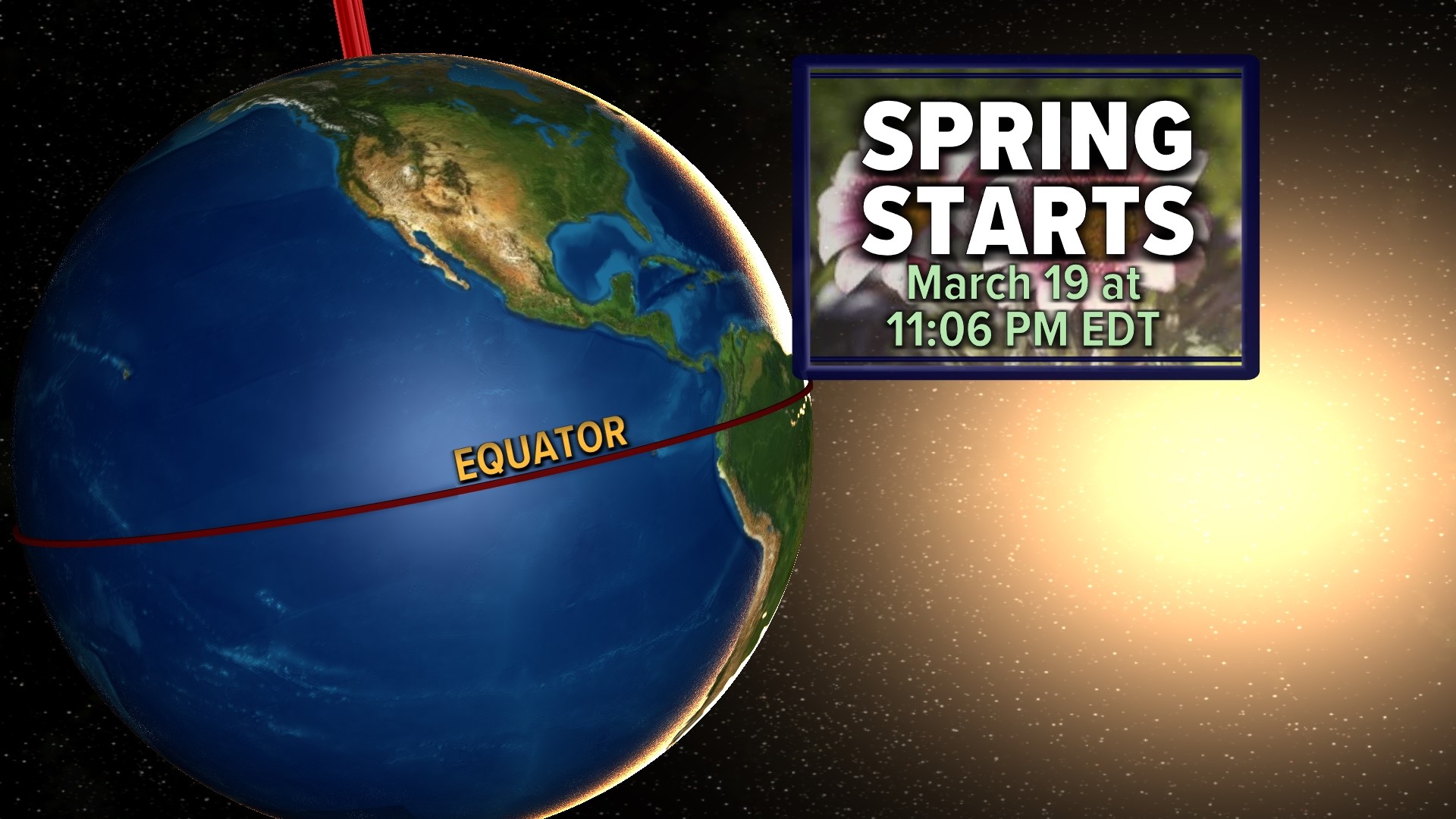NORFOLK, Va. — March is a month of change with warming temperatures, gusty winds and increasing pollen. It’s also the astronomical start of the spring season.
Usually occurring on March 20 or 21 — or this year — on March 19 because it’s a leap year, the vernal or “spring” equinox is when the sun is located directly over the Earth’s equator.
As you may recall, the Earth is tilted on its axis, about 23 ½ degrees. The Earth’s tilt is why we have seasons. In the summer, the Northern Hemisphere is tilted towards the sun, while in the winter, we are tilted away from the sun.
On the spring equinox, the Northern and Southern Hemispheres receive roughly equal amounts of daylight and night since neither hemisphere is tilted more towards or away from the sun than the other. Equinox comes from two Latin words meaning equal (aequus) night (nox).
We will continue to see longer periods of daylight until we reach the summer solstice in June, when the sun is located over the Tropic of Cancer, marking the day coined “longest day of the year.”
But there is a lag between the longest day of the year and the warmest temperatures, usually about 3 weeks later in mid-July. Just as the warmest part of the day usually occurs several hours following noon, when the sun is highest in the sky so does the warmest part of the summer lag the summer solstice. This lag is due to the time required to heat up the ground and water.

